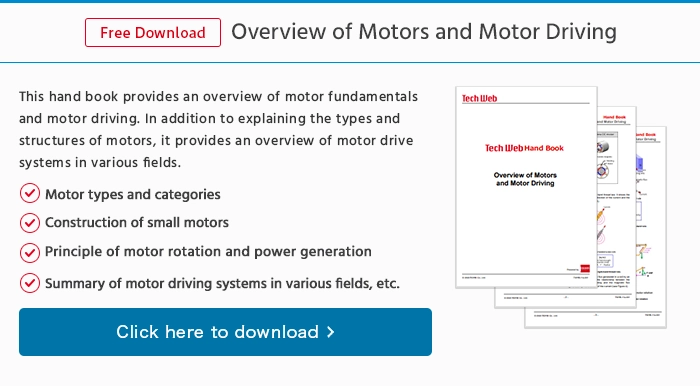Magnetic Force
<How Does a Motor Work? (1)>
Motor Rotation Using a Magnet/Magnetic Force
The basic operating principle of a motor is as follows.
Around a permanent magnet having a rotational axis:
① When the outer magnets rotate (referred to as a rotating magnetic field),② The N and S poles attract and repel each other, ③ Causing the magnet with the rotational axis (center) to turn.

Alternatively, supplying current to a conductor generates a magnetic field around, creating a magnetic force (Rotational magnetic field). This results in the same effect as rotating a magnet.

If we wind a conductive wire into a coil the magnetic force is combined, generating a large magnetic flux along with North and South poles.






